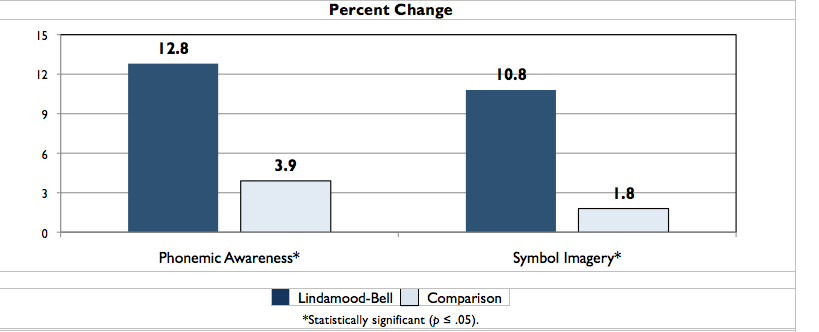Neural Changes Following Remediation in Adult Developmental Dyslexia
Eden, G. F., Jones, K. M., Cappell, K., Gareau, L., Wood, F. B., Zeffiro, T. A., & Flowers, D. L. (2004). Neural changes following remediation in adult developmental dyslexia. Neuron, 44, 411-422. Retrieved from https://doi.org/10.1016/j.neuron.2004.10.019
Background
In this study, a group of adult dyslexics received eight weeks of Lindamood-Bell instruction. Before and after instruction, subjects were administered basic reading skills assessments and functional magnetic resonance imaging (fMRI). A similar group of adult dyslexics went through the same procedures but did not receive Lindamood-Bell instruction. Lindamood-Bell subjects received an average of 112 hours of Lindamood-Bell instruction to develop reading skills. This experiment investigated the constructs of Dual Coding Theory using the Seeing Stars and Visualizing and Verbalizing programs (some subjects received instruction in the Lindamood Phoneme Sequencing program as well). Instruction was delivered by specially trained Lindamood-Bell staff. Assessments and fMRIs were administered by independent researchers.
Results
On average, Lindamood-Bell subjects demonstrated greater improvements, statistically, than comparison subjects on both measures. In addition, following instruction, Lindamood-Bell subjects had a larger increase in brain activity than comparison subjects. The results of this study support the Dual Coding Theory model of cognition and illustrate that instruction in the Lindamood-Bell programs lead to improved reading and increased brain activity.






